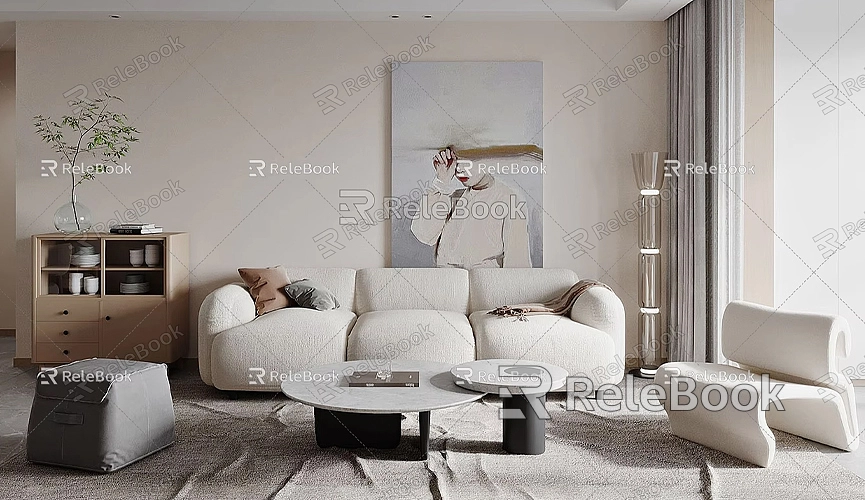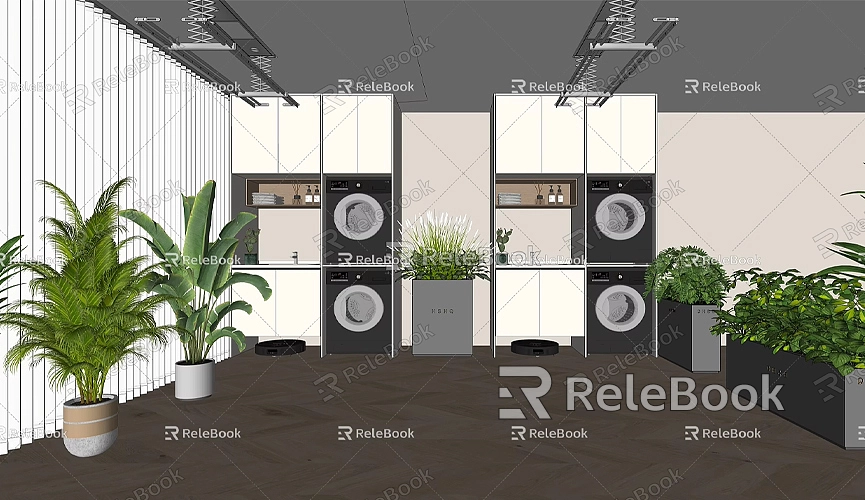How to Import a SketchUp Model into Lumion
SketchUp is a widely used 3D modeling software in architecture, interior design, and landscape design, favored by designers for its user-friendly interface and powerful features. Lumion, on the other hand, is a real-time 3D rendering software particularly well-suited for quickly creating realistic architectural visualizations. Importing SketchUp models into Lumion for rendering is a crucial step for many designers to enhance efficiency and visual quality. So, how can you smoothly import a SketchUp model into Lumion? This article will detail the process and provide some optimization tips and considerations.

Preparing the SketchUp Model
Before importing the model, you need to ensure that it is ready in SketchUp. This includes cleaning up the model, checking material applications, and optimizing geometry.
- Clean Up the Model: During modeling in SketchUp, extra faces, hidden lines, and other remnants can accumulate due to repeated modifications. You can use SketchUp’s "Clean Up" plugin or manually delete unnecessary geometry. This not only reduces the model size but also improves loading and rendering speeds in Lumion.
- Check Materials: While Lumion has a powerful material system, applying basic materials reasonably in SketchUp can be very helpful. To ensure quick adjustments and replacements after import, it’s advisable to use different material groups to distinguish various parts of the model.
Exporting the SketchUp Model
To import the SketchUp model into Lumion, you need to save it in a format that Lumion supports. Fortunately, Lumion directly supports SketchUp's native file format (.SKP), making the export process very straightforward:
1. Open the SketchUp model and ensure all modifications are saved.
2. Click on the "File" menu and select "Save As," saving the model in the latest SketchUp format (usually .SKP).
3. After saving the file, Lumion will be able to read it directly for import.
Importing the SketchUp Model into Lumion
The steps for importing the SketchUp model into Lumion are also simple and intuitive. Here’s how to do it:.

1. Open Lumion and create a new scene, or choose an existing scene to import the model into.
2. In the right-hand menu of Lumion, click the "Import" button.
3. Browse to find the .SKP file you just saved and click "Open."
4. Lumion will automatically load and display the model. You can use the mouse to adjust the model’s position and scale to ensure it matches other elements in the scene.
After importing the model, you may need to make some basic adjustments, such as positioning, height, or rotation, to ensure it displays correctly in the Lumion scene.
Adjusting Materials and Lighting in Lumion
After importing the model, the next crucial step is to adjust materials and lighting. While you may have assigned some materials in SketchUp, Lumion’s material library offers a wide range of high-quality options for replacement and optimization.
- Replace Materials: You can select a part of the model, open Lumion’s material library, and choose more realistic materials such as wood, metal, or glass for that part. Lumion’s materials not only provide rich details but also allow for real-time adjustments of reflections, bump effects, and other parameters, making the model more lifelike.
- Lighting and Environment Settings: In addition to materials, Lumion’s lighting and environment settings can enhance the realism of your model. You can add sunlight, point lights, and other lighting effects to simulate different natural light conditions at various times of day. If you want to showcase a night scene, lighting becomes especially critical.
Optimizing Rendering Performance
Lumion excels in real-time rendering, even when handling complex architectural scenes. However, to ensure smooth performance, you can try the following optimization techniques:
- Simplify the Model: If your SketchUp model is overly complex (for example, containing a lot of detail or excessive polygons), simplify unnecessary geometry before import. This can significantly enhance Lumion's rendering performance.
- Optimize Materials: Try to minimize the number of different material types to improve rendering efficiency. While Lumion can handle complex material processing, having too many materials can slow down model loading.
- Scene Adjustments: Adjust elements in the scene as needed, such as ambient light, reflections, and sky settings, which can help achieve the desired visual effect for your model.
Final Rendering and Output
After making adjustments and optimizations to the model, you can begin the final rendering process. Lumion’s rendering capabilities are very intuitive, supporting the output of static images, panoramas, and animated videos. You can adjust resolution, lighting effects, material details, and other settings according to project needs to generate high-definition renderings or animations for project presentations or reports.
Importing SketchUp models into Lumion is an effective way to quickly enhance design outcomes. By adequately preparing the model, optimizing the import process, and fully utilizing Lumion’s powerful material and lighting systems, you can easily achieve high-quality rendering results. Whether for architectural visualization, interior design, or landscape design, the combination of SketchUp and Lumion can make your designs more vivid and intuitive.
If you need high-quality 3D textures and HDRI for your models and virtual scenes, you can download them for free from [Relebook](https://textures.relebook.com/). For exquisite 3D models, you can also find a wealth of quality resources at [Relebook](https://3dmodels.relebook.com/), helping your designs stand out even more.

